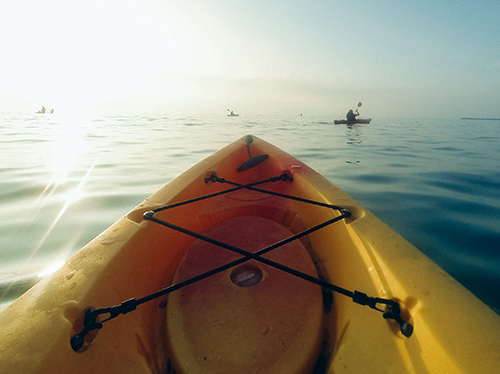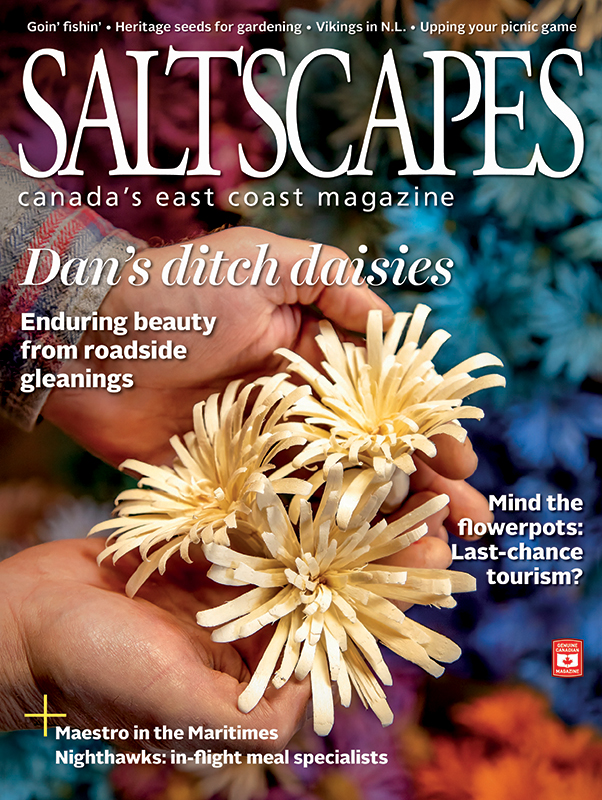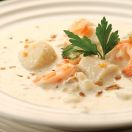Tales of tourism from centuries past
JAMES HOLMAN is known as the “Father of Tourism” on Prince Edward Island. A Saint John, NB, native, he went to the Island in 1851, and like many other visitors, was smitten by its laid-back lifestyle, rural charm, and sea vistas. In 1872, he opened Summerside’s Island Park Hotel and began advertising it in US newspapers, essentially launching the Island’s tourism trade.
Marlene Campbell of Wyatt Heritage Properties, an arts and culture heritage group that manages several historic properties in Summerside, discovered this interesting tidbit when she did a study of tourism in her home province. According to colleague Jean MacKay, the study “helps us to understand why people came to the Island in the past, and assists us in making the most of their visits today.”
Both ladies believe that visitors’ reasons for coming haven’t changed much over the years. Says Marlene: “Over and over, we’ve been told that the fact that we are an island attracts people, as people view islands as magical and mystical; they revel in the sweep of sea and land.” She laughs. “And we have that red mud.”
The study coincides with written accounts of tourism activity found 100 years ago in Island newspapers. “The monster regatta which is being held at Georgetown today is attracting a large number of people to this superb summer resort,” reads a report in the Island Patriot, adding, “The harbour presents a lively appearance with numerous boats darting to and fro.” Another tells of the annual Gathering of the Clans with athletic events and “inspiring music;” it notes that dancing was “heartily enjoyed.”

Another attraction on PEI—and in New Brunswick—in 1912 was the “Mighty Haag Shows.” This circus came with 250 performers, a full menagerie and 30 clowns, all travelling on 15 railcars. Interest in the circus was high, as it hadn’t visited in 20 years. “There will be the usual freaks, monstrosities and other features of a first-class circus,” said one newspaper account.
Edna K. Wooley summarized PEI’s appeal in the Cleveland (Ohio) News in 1911. She wrote about her Island visit, noting that “[it is] called the ‘Garden of the Gulf,’ and my brief stay there did not discover anything to belie the title. It is Arcadia.”
Anne of Green Gables was being widely read in 1912, but it was the late 1920s before its author, Lucy Maud Montgomery, was to write to a friend: “Cavendish is being overrun and exploited and spoiled by mobs of tourists.”
However, tourists were probably not flocking to the Island in search of modern modes of transportation. A century ago, although touring by auto was catching on everywhere else, cars were still banned on the Island’s roads.
According to Lucide Rioux’s Early Motoring in New Brunswick, on the other hand, in 1911 there were 483 cars registered in New Brunswick. The province promoted its proximity to the New England States as a draw for auto travellers. Some claimed its roads were the worst in Canada. One Dr. Jewett, having driven some 10,000 miles in his automobile throughout northeast North America, described New Brunswick’s roads in Woodstock’s Carleton Sentinel as a “menace to safe travel.”
In contrast, Chatham, NB’s Gazette carried a story of a “new road record”—a trip made by Fred McKnight from Chatham to Campbellton and back that was done in 22 hours, 23 minutes, on roads described as being in “fine shape” due to the “split log drag” method of smoothing out the bumps. (On today’s roads, this return trip of about 400 kilometres would take roughly four hours.)
Most travellers to the province, though, were still arriving by train or steamer. Ontario resident, Miss Alice M. Elliot, took the train from McAdam Junction to Perth and was delighted with the experience, especially the views it gave her of the St. John River, which she felt was the “Rhine of America.”
Miss Elliot discerned that hunting and fishing would be good in the province, and indeed, this was one of the first strategies used to attract visitors. That it worked is clear in a story carried in Chatham’s Tri-Weekly Gazette on August 13, 1913. It told of J.C. Eaton (of the famed Eaton family), who arrived in Chatham on his 174-foot yacht, then hired a train to take his party to Doaktown so they could fish for salmon.
But cooling off, not catching salmon or hunting bears, was the main reason many Americans came to the south coast of New Brunswick. Campobello Island was first to attract such visitors. Boston resident Kate Gannett Wells, whose husband, Samuel, was one of the builders of two massive hotels on the island in 1881 (the Tyn-y-Coed and Tyn-y-Maes hotels), noted the “exhilarating climate” as its chief attraction. This was in reference to the Bay of Fundy’s natural cooling effect.
St. Andrews was next to take advantage of the natural air conditioning; in 1889, the Algonquin Hotel opened, followed by the Algonquin Golf Course in 1894, where the first golf tournament ever held in New Brunswick was staged.
In Saint John, a cluster of 16 cottages situated around a tennis court were built on the Bay Shore at Duck Cove. Known as Sans-Souci on the Bay, they were so popular that owner D. Russell Jack claimed he was able to select “persons of undoubtedly good standing and respectability” as guests. To protect their privacy, he chased tramps and raucous rifle-carrying teens from the grounds, and once was accused of stealing some boys’ clothing that had been left on his beach when the boys went swimming au naturel in the Bay.
The story of early tourism in Nova Scotia is much the same as with its sister provinces. Long-time collector of Nova Scotia lore, Clary Croft, notes in A Maritimer’s Miscellany that, in 1869, the province began to capitalize on the legend of Evangeline as told in Henry Wadsworth Longfellow’s 1847 epic poem; he observes that the Annapolis Valley, easily reached from the US by rail and steamer, was already known as the “land of Evangeline.”
The newspapers of 1912 verify many entries in Croft’s books. For example, the Sydney Daily Post noted the city was “crowded with tourists” on July 31, 1912. Subsequent accounts in the paper show that the attractions they came to enjoy included bathing in “milk warm water” in the Mira, and that tuna fishing in Mira Bay was “capturing the attention of the leading sportsmen of America.” The paper also mentions the “remaining fortifications” at Louisbourg as being a place “unsurpassed in historical interest.”
The Saint John publication, The Busy East, had two full pages in 1911 on the delight of a visit to Fairy Lake, or as it was also known, “Kedgemakooge,” in Nova Scotia. It’s described as a “sportsman’s paradise,” suggesting the lake area should consider expanding its short, 10-week tourist season.
In Halifax, visitors enjoyed visits to Citadel Hill and the Public Gardens, and took miniature sea voyages across the harbour by ferry to picnic at Cow Bay Beach. Other delights visitors to Halifax could enjoy: seeing the illuminated boat parade in the harbour, attending Col. Ferari’s Trained Wild Animal Arena and oohing and ahhing at Broadway star Margaret Anglin’s 1912 show at the Academy of Music.
Perhaps PEI tourism guru Marlene Campbell sums up the experience of past visitors to the Maritimes best: “They wished they could capture it and take a piece back home.” That same theme still rings true today.













